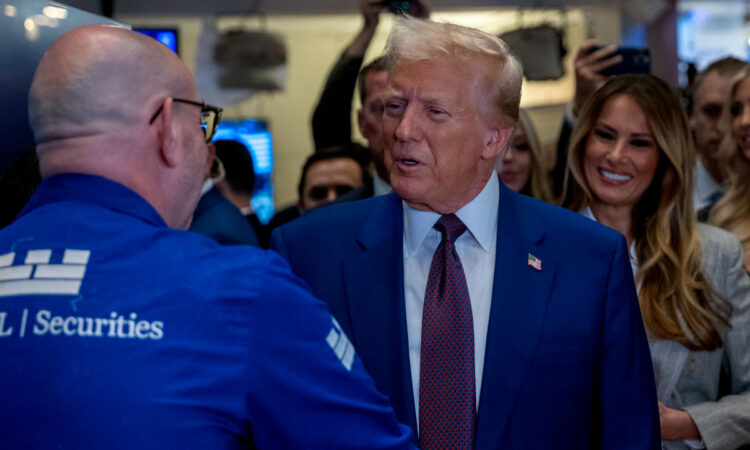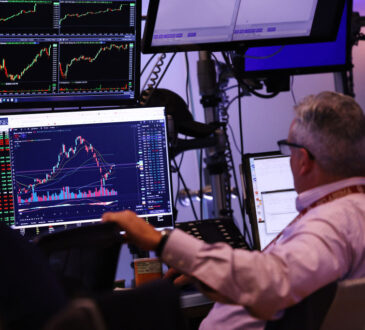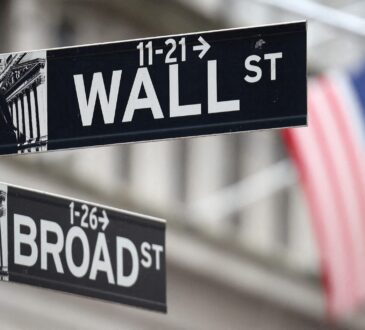
US stocks fell sharply on Monday, as Wall Street showed the effects of President Donald Trump’s announcement of tariffs on China, Mexico, and Canada.
The tech-heavy Nasdaq Composite (^IXIC) fell more than 2%, while the S&P 500 (^GSPC) spiraled 1.6%. The Dow Jones Industrial Average (^DJI) tumbled 1.2%, or over 550 points.
Consumer discretionary (XLY) stocks, which includes automakers, fell the most. Tech (XLK) also dragged on markets as shares of AI chip giant Nvidia (NVDA) and iPhone maker Apple (AAPL) dropped.
The tariffs, set to take effect on Tuesday, will include 25% duties on Canada and Mexico, and 10% on China. Energy imports from Canada will carry a lower 10% duty.
Trump has also said tariffs on Europe will “definitely happen,” but gave no further detail. European stock markets (^STOXX) moved lower Monday.
The US dollar index (DX-Y.NYB, DX=F) rose to trade near its highest levels in two years. Meanwhile, West Texas Intermediate crude futures (CL=F) jumped well over 2%, outpacing the 1.6% rise for the international benchmark Brent (BZ=F).
With Trump’s tariffs arriving as expected over the past week, focus has been honed in on retaliatory announcements. As Yahoo Finance’s Ben Werschkul reported, Canada and Mexico were quick to announce measures across a range of US goods. Prime Minister Justin Trudeau said Canada will place 25% counter-tariffs on around $107 billion in American-made products.
The tit-for-tat moves come amid considerable uncertainty about President Trump’s trade agenda for 2025. That uncertainty is a large part of the Fed’s desire to hold interest rates steady,over fears of a rise in inflation.
The tariffs promise to impact consumers directly across a number of industries. Automobiles and auto parts, gas and oil, clothes, computers, whiskey, and avocados are among the items expected to see prices rise.
LIVE 14 updates
-
-
-
-
-
-
-
-
-
-
-
-
-
Asian markets slide as Trump tariffs make impact
Asian markets, the first to open since President Donald Trump’s tariff announcement, have seen big slides as investors react to a trade war poised to erupt.
Major Asian indexes all saw heavy losses throughout the day’s trade as The MSCI Asia Pacific Index fell more than 2%, Hong Kong’s Hang Seng Index was down 0.7%, Japan’s Nikkei 225 was 2.8% lower, South Korea’s Kospi tumbled 3% and Australia’s ASX 200 fell 1.9%.
Markets in mainland China have remained closed for the Lunar New Year holiday, but with China being singled out for a 10% tariff on exports we can expect to see a similar downturn.
Currently, Beijing has not announced a plan of economic retaliation. Instead there have been calls to “meet China halfway” from the Chinese ministry of Commerce in negotiations around the upcoming implementation of duties.
Some of the biggest sectors to see downturns from the tariffs include:
Automakers saw shares drop of at least 5% in household names such as Toyota (TM), Honda (HMC) and Nissan (7201.T)
Chinese e-commerce platforms are under fire as the “de minimus” trade exemption for small package is getting expired. Leading to impacts on costs for clothing, accessories, home goods and electronics.
Asia’s biggest chip exporters, including Taiwan Semiconductor Manufacturing Co (TSM) . and Samsung Electronics Co (005930.KS)., dipped by 1% as Trump said he would tax the essential components of electronics.
-







